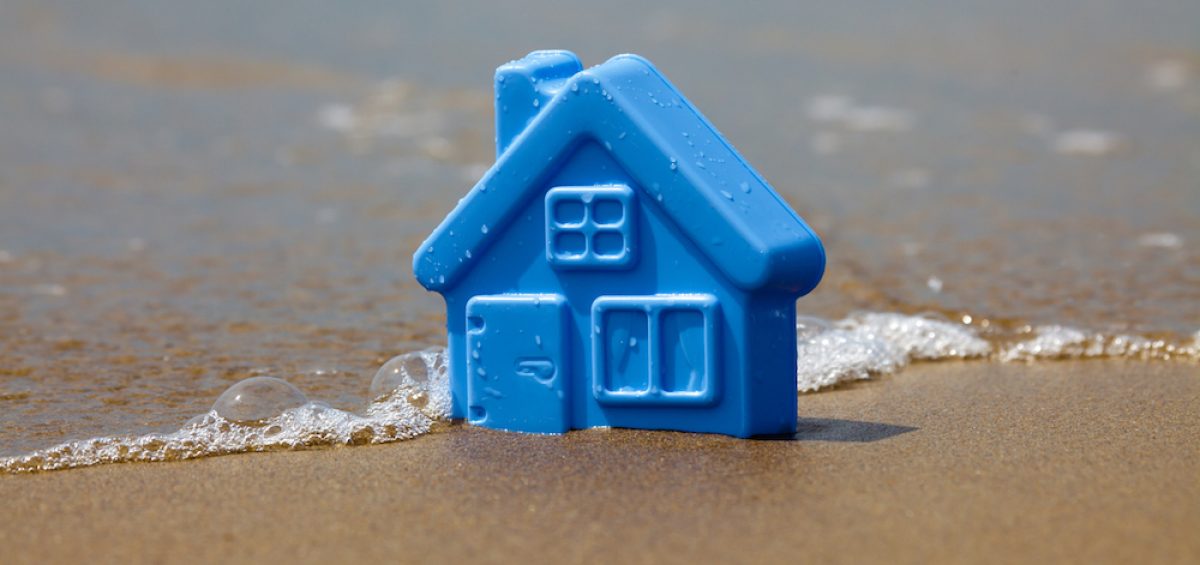
Are you in one of the 10 states most affected by rising flood insurance rates?
You learn a lot about a house once you live in it for a few months. You hear some creaky sounds; you meet some odd neighbors. And your first bills start to arrive. It turns out that the monthly costs of owning a home can be a lot more complicated than the original math you did months ago. Sure, you took into account mortgage payments, property taxes, and utilities. But new costs in the form of local taxes, insurance rate hikes, or even some other surprise fees can pop up—often for reasons you never saw coming. There also costs that you only need to worry about every few years such as septic tank maintenance, sewer repair, upgrading appliances, etc.
Here are nine examples of new costs U.S. homeowners are facing—and how you can be sure to factor them into your future home budget.
8 Surprise Costs To Consider as You House-Hunt
1. National flood insurance rates
Natural disasters are costly, and higher insurance rates often follow. You can learn more about this from the link provided here. Five million policyholders are covered by the National Flood Insurance Program, which is currently $25 billion in debt and in need of new solutions. On April 1, premiums increased an average of 6.3%, from $827 to $878. Now Congress faces a Sept. 30, 2017 deadline to renew the program and decide how much homeowners should pay.
What you can do
Eighty percent of the program’s claims come from just 10 states: California, Florida, Georgia, Louisiana, New Jersey, New York, North Carolina, South Carolina, Texas, and Virginia. When home shopping, ask your agent about flood risks and check Trulia’s hazards maps. Choose the right local damage restoration company to avoid a lot of problems down the road. We have the experience and expertise to handle any water damage issue you may have. For roof replacement or repair, you can visit https://watermarkexteriors.com/our-services/roof-replacement/.
2. Water costs in San Francisco Bay Area
Paying more for doing the right thing? It sounds awfully unfair, but some California homeowners face big spikes in water costs precisely because they were such good conservationists during that state’s massive drought. More than 1.4 million residents in Alameda and Contra Costa counties will see rates rise 19 percent over two years if a proposal by the East Bay Municipal Utility District is approved. About 30 percent of that increase is earmarked to offset the impact of conservation on district revenue. To avoid higher bills, residents may have to do what they’ve already done: consume less. On average, households dropped water use to 200 gallons per day, down from 250 gallons pre-drought, the East Bay Times reports.
What you can do
It may seem strange, but it will actually pay to keep conserving water. Using less costs less. If you are looking to buy a home in California, be sure to ask your agent about the water costs and do a little Google research on the county to determine if rate hikes are part of any upcoming legislation.
3. Higher fees and taxes to support infrastructure in Virginia
The Washington Post reports that homeowners in Alexandria, VA will pay $103 more per year for storm water, sewer, and refuse fees as part of a new $728 million operating fund that also bumped up property taxes by $0.06 per $100 of assessed value. Average homeowners will see taxes rise by about $356 (plus the $103 fee). Aging schools and years of underfunding infrastructure necessitated the increases, officials say.
What you can do
Probably not a lot once fees and new taxes have been authorized. But if new fees and tax hikes make you nervous, check into the budgetary health of the city or county where you are thinking of buying. Have they been good stewards of the infrastructure? Do they have a fiscal surplus or are they going to need to come looking for more money?
4. Basic maintenance costs in Detroit
Homeowners living in Detroit, MI face annual fees ranging from $250 to $494 for services such as snow removal, gutter repair, residential or commercial roofing, and enhanced security thanks to new local assessments. The Detroit Free Press reports that the first special assessment districts were approved last year and impact homeowners in Palmer Woods, Sherwood Forest, and the Detroit Golf Club.
What you can do
Check with your real estate agent or local City Hall to find out what local assessments exist and what exactly they cover.
5. Fees for leasing docks in Florida
Waterfront property is almost always a boon to home values, but the Tampa Bay Times reports that some homeowners in St. Petersburg, FL are having to pay new fees to enjoy what they’ve considered part of their property. Homeowners along Placido Bayou are being asked to pay $150 for three-year leases to use and maintain docks that they didn’t know sat on city-owned land. On the other hand, no matter what type of dock you need, the professional dock builders like the ones at https://www.radtkecontractors.com/docks-builders can handle any custom dock project for you.
What you can do
Before buying waterfront land, check with local agencies and be sure to work with a real estate agent who is a waterfront expert and knows all the use and easement rules.
6. New fees for trash cans in Utah
Trash pick-up is typically a must-have and the cans usually come with the service. That’s no longer true for new homeowners in some Salt Lake City neighborhoods. They’re now paying $50 for each trash can in addition to the $14.75 monthly fee. The Wasatch Front Waste and Recycling District added the fee, plus a one-time $10 delivery charge, to offset the expense of new cans in a booming housing market.
What you can do
Aside from keeping them clean and locked up, there’s not a lot to be done on this one. At least the fee is only about $60 amortized over a year. You may also consider hiring dumpster rental services.
7. Removing dead trees
Mature trees almost always help home values. That’s the good news. The bad news is that damage due to major beetle infestations are driving up costs as HOAs, cities, and homeowners deal with infected trees. The emerald ash borer has destroyed 150 to 200 million of America’s 8 billion ash trees, the Kansas City Star reports. Beetle infestation and drought have also claimed hundreds of millions of trees in other states, including California, Colorado and Minnesota.
Homeowners may also be individually responsible for removal costs if sick trees are on their property, and may need to hire a service like roll off dumpsters in order to properly dispose of the dead or infested tree itself due to its size. Home-owner’s insurance generally does not pay for removal of a tree that has not fallen, and according to Home Advisor, a search site for home-improvement professionals, tree removal averages about $650.
What you can do
Take note of property lines so that you know which trees are yours. Make sure trees are healthy. If the area is suffering from a beetle blight, you might want to have a professional arborist check the trees on your property for damage. Whatever you do, don’t leave a dead tree standing—they pose a danger to people and property.
8. HOA fees to cover deadbeat neighbors
It isn’t surprising when HOA fees rise to help pay for aging buildings or other infrastructure. Trulia HOA fee research indicates that average monthly fees—imposed to maintain shared property—increased to $331 in 2015, 32.4% higher than a decade earlier. But what happens when neighbors don’t pay up? The Waipahu, HI Village Park Community Association, managed by Cadmus Properties in Honolulu, decided last year to charge the responsible (read: paying) residents $80 extra. The special assessment was needed because a “substantial” number of homeowners hadn’t paid dues, Cadmus said.
What you can do
If you are buying a place with HOA fees, be aware that they will go up. Be sure to ask how often they typically get adjusted and how that gets decided. Do residents get to vote on increases and uses?




Leave a Comment